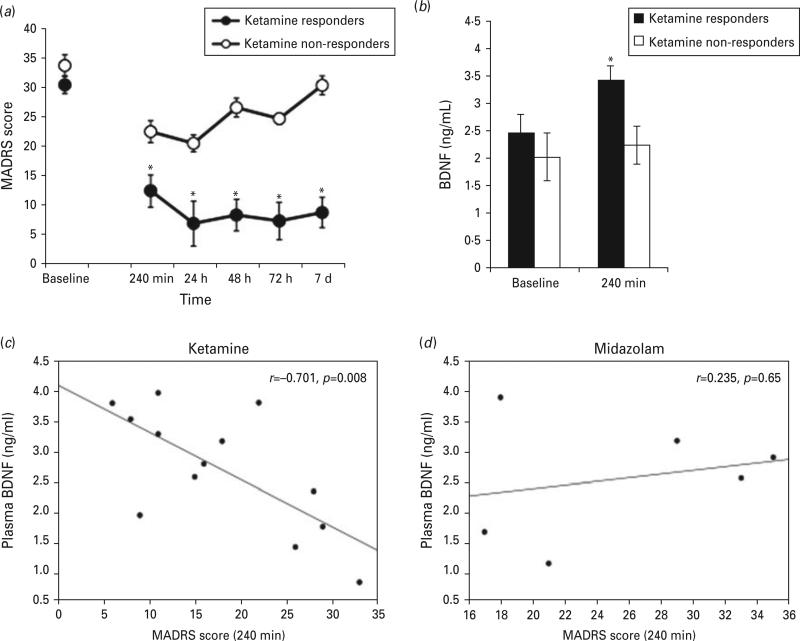Fig. 1.
Plasma BDNF levels and depression outcomes. Benefit of ketamine was greater in responders (N=7) compared to nonresponders (N=8) as revealed by significantly lower Montgomery–Åsberg Depression Rating Scale (MADRS) scores over time (a, *p<0.05). Plasma BDNF levels were significantly increased (b, *p=0.032) at 240 min in responders following ketamine. Relationship between plasma BDNF levels and MADRS scores in patients that received ketamine (c, N=15) and midazolam (d, N=7). Plasma BDNF levels were highly correlated with MADRS scores at 240 min in patients that received ketamine but not midazolam. Responders represent patients with a greater than or equal to a 50% reduction MADRS score 7 d post-ketamine infusion compared to baseline.

